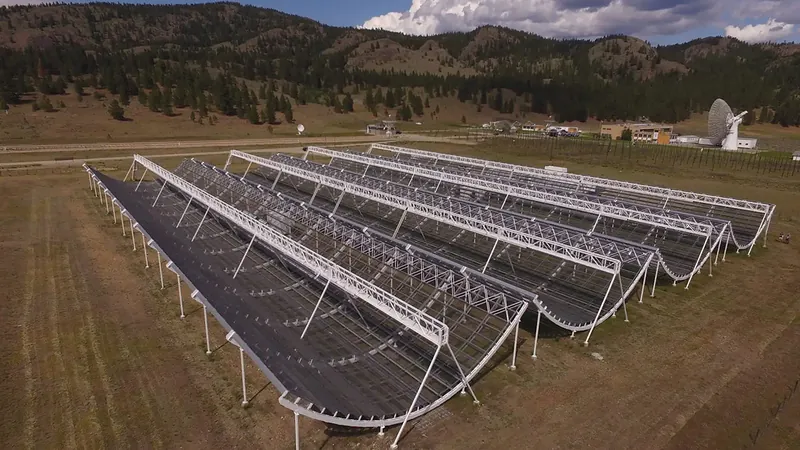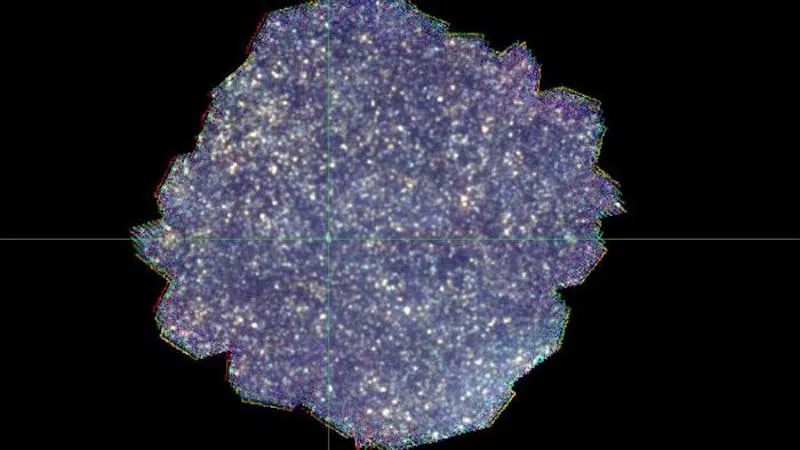
Breakthrough Discovery: Fast Radio Bursts May Unveil Secrets of the Universe!
2025-03-26
Author: John Tan
Introduction to Fast Radio Bursts (FRBs)
Fast radio bursts (FRBs) are among the most enigmatic phenomena in the cosmos—brief yet intense pulses of radio waves generated by incredibly dense astrophysical objects, such as neutron stars and black holes. First identified in 2007 by Duncan Lorimer and his student David Narkevic while analyzing archival data from Australia’s Parkes radio telescope, the scientific community has since observed over a thousand FRBs from both our Milky Way galaxy and distant galaxies. Each FRB typically lasts only a few milliseconds yet can emit energy equivalent to what our Sun produces over 30 years! Despite their potency, the fundamental processes that give rise to these bursts remain shrouded in mystery.
Scintillation Effects and Recent Research
One fascinating aspect of FRBs is the effect of inhomogeneities within the interstellar medium, which scatter FRB radio waves and create a scintillation effect—similar to how stars twinkle. Recent research spearheaded by astronomer Kenzie Nimmo and her team utilized scintillation data from the FRB 20221022A, a remarkable 2.5-millisecond burst from a galaxy located around 200 million light-years away, detected on October 22, 2022, by the groundbreaking Canadian Hydrogen Intensity Mapping Experiment Fast Radio Burst project (CHIME/FRB).
CHIME Telescope: A Cutting-Edge Instrument
Regarded as the world's leading FRB detector, the CHIME telescope is an engineering marvel, with a design that features four large, stationary semi-cylindrical paraboloidal reflectors, each 20 meters wide and 100 meters long. This innovative configuration allows CHIME to discover an average of three new FRBs daily. It operates in a frequency range of 400 to 800 MHz, providing a broad bandwidth and high sensitivity, which are crucial for pinpointing celestial sources of radio waves.
Emission Mechanisms: Near-Field vs. Far-Away Models
Researchers are focusing on two main hypotheses regarding the emission mechanisms of FRBs: near-field models and far-away models. The former suggests that emissions occur near the turbulent magnetosphere of a central object, whereas the latter proposes that emissions arise from shocks traveling outward to vast distances. Nimmo and her team's study found two distinct scintillation scales from FRB 20221022A, one linked to its host galaxy, and another related to scattering within our Milky Way. This led to a fascinating conclusion: the size of the FRB's emission region is less than 30,000 kilometers, providing compelling evidence supporting the near-field model over the far-away counterpart.
Polarization Observations and Implications
Moreover, the detection of FRB 20221022A showcased a significant shift in the burst's polarization angle—a striking "S-shaped" change covering about 130 degrees in just 2.5 milliseconds. This observation suggests that the emission beam rotates across our line of sight, akin to the sweeping beam of a lighthouse. Such behavior hints at an origin based in the magnetosphere, as highly magnetized regions can significantly affect how radio waves are emitted.
Future Directions in FRB Research
The implications of Nimmo and her team's findings extend beyond mere astrophysical curiosity; they highlight the potential of scintillation studies to fine-tune our understanding of FRB mechanisms, paving the way for deeper insights into their environments and origins. As we look to the future, the field of FRB research is poised for explosive growth. CHIME is not only adept at identifying host galaxies for FRBs, but it's also developing an "outrigger" program, employing distributed telescopes that will enhance localization accuracy to within tens of milliarcseconds. This program recently saw the installation of a third outrigger telescope in Northern California, promising to elevate our observational capabilities to new heights.
Conclusion
Stay tuned—these spectacular bursts could unlock the universe's most profound secrets!



 Brasil (PT)
Brasil (PT)
 Canada (EN)
Canada (EN)
 Chile (ES)
Chile (ES)
 Česko (CS)
Česko (CS)
 대한민국 (KO)
대한민국 (KO)
 España (ES)
España (ES)
 France (FR)
France (FR)
 Hong Kong (EN)
Hong Kong (EN)
 Italia (IT)
Italia (IT)
 日本 (JA)
日本 (JA)
 Magyarország (HU)
Magyarország (HU)
 Norge (NO)
Norge (NO)
 Polska (PL)
Polska (PL)
 Schweiz (DE)
Schweiz (DE)
 Singapore (EN)
Singapore (EN)
 Sverige (SV)
Sverige (SV)
 Suomi (FI)
Suomi (FI)
 Türkiye (TR)
Türkiye (TR)
 الإمارات العربية المتحدة (AR)
الإمارات العربية المتحدة (AR)